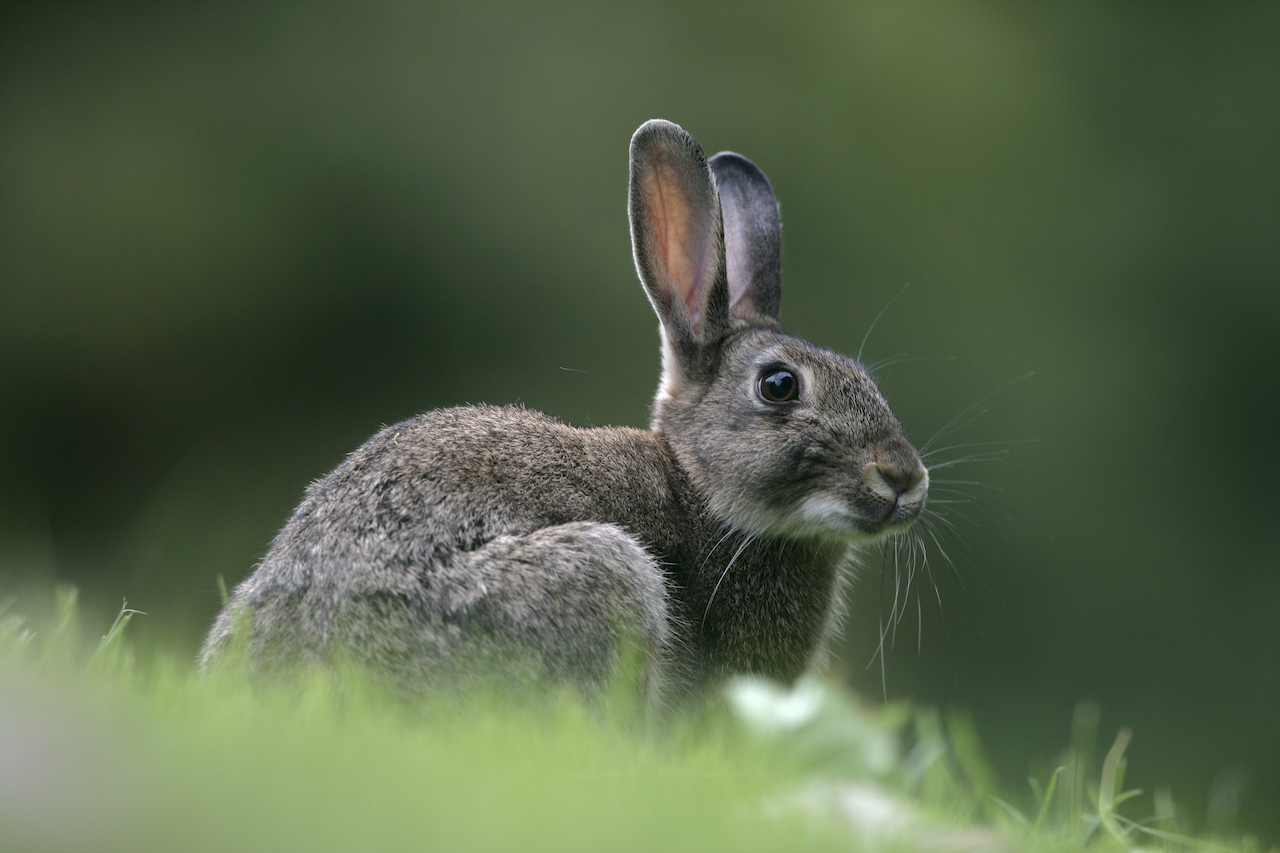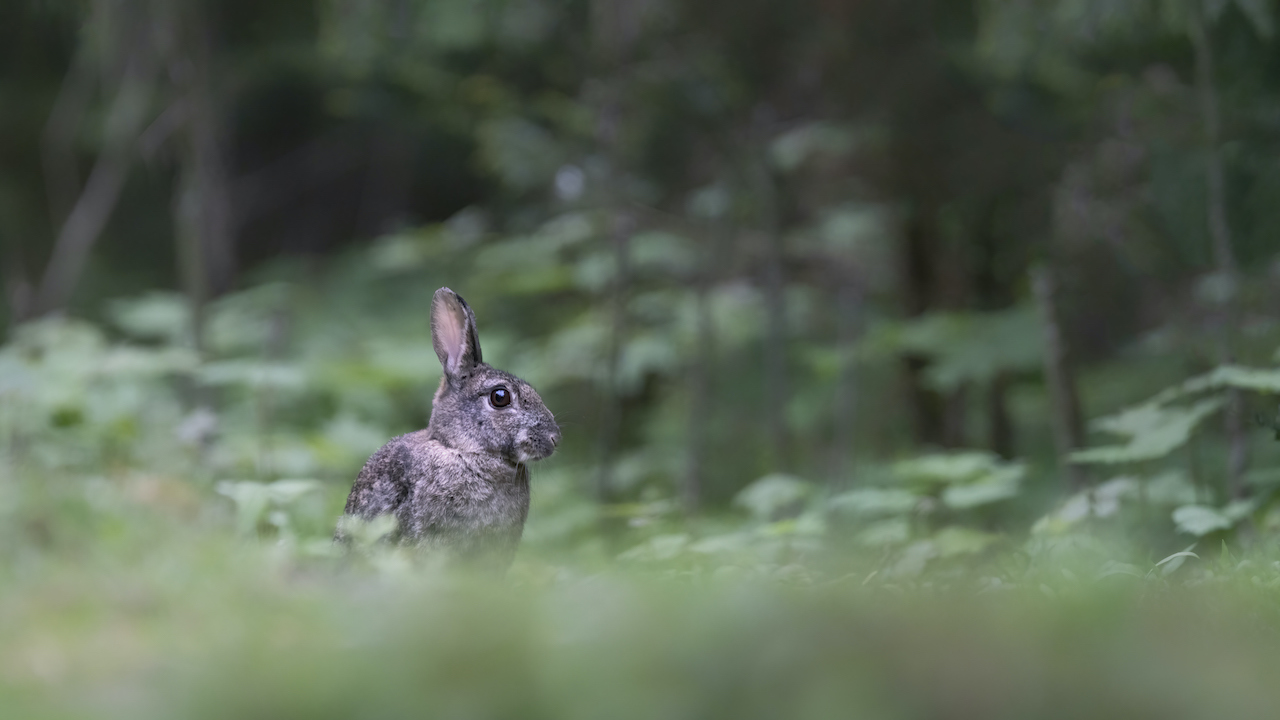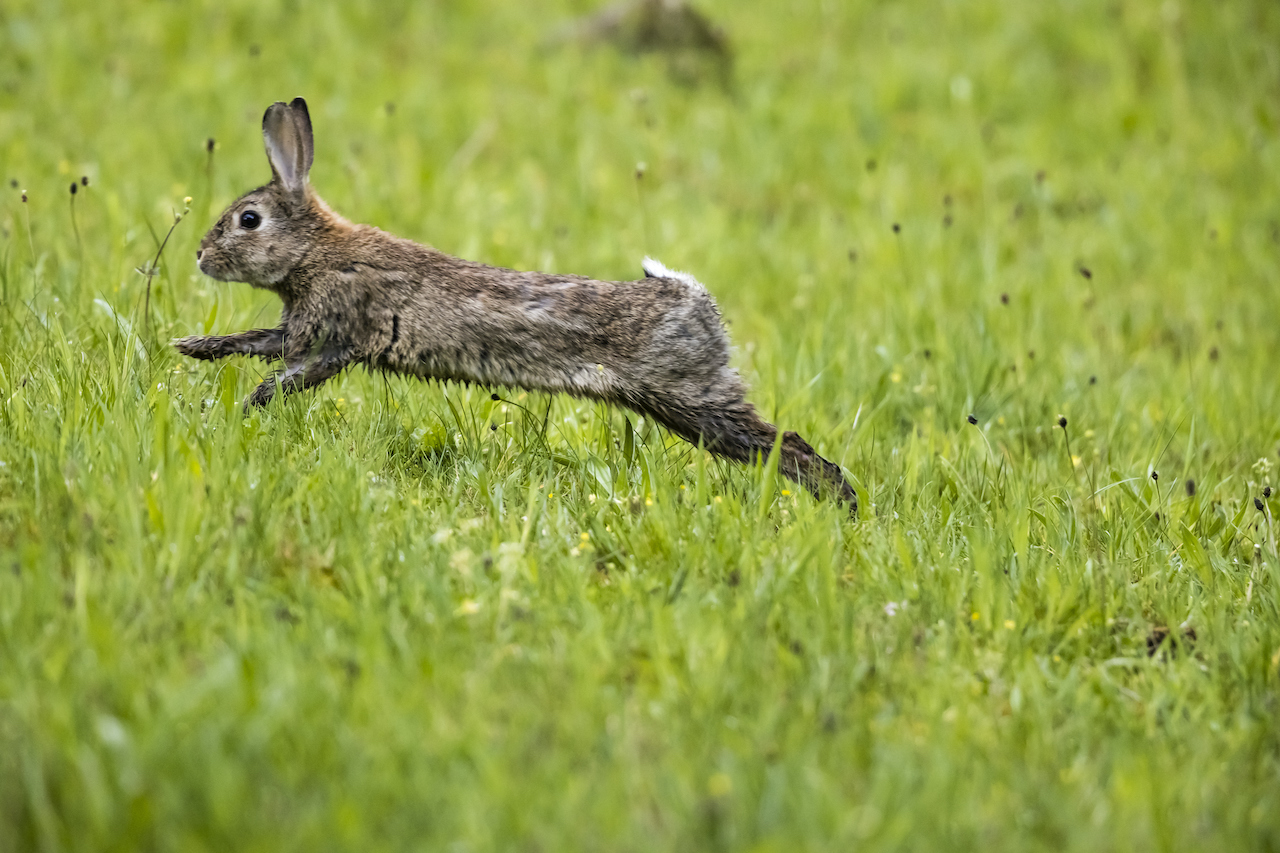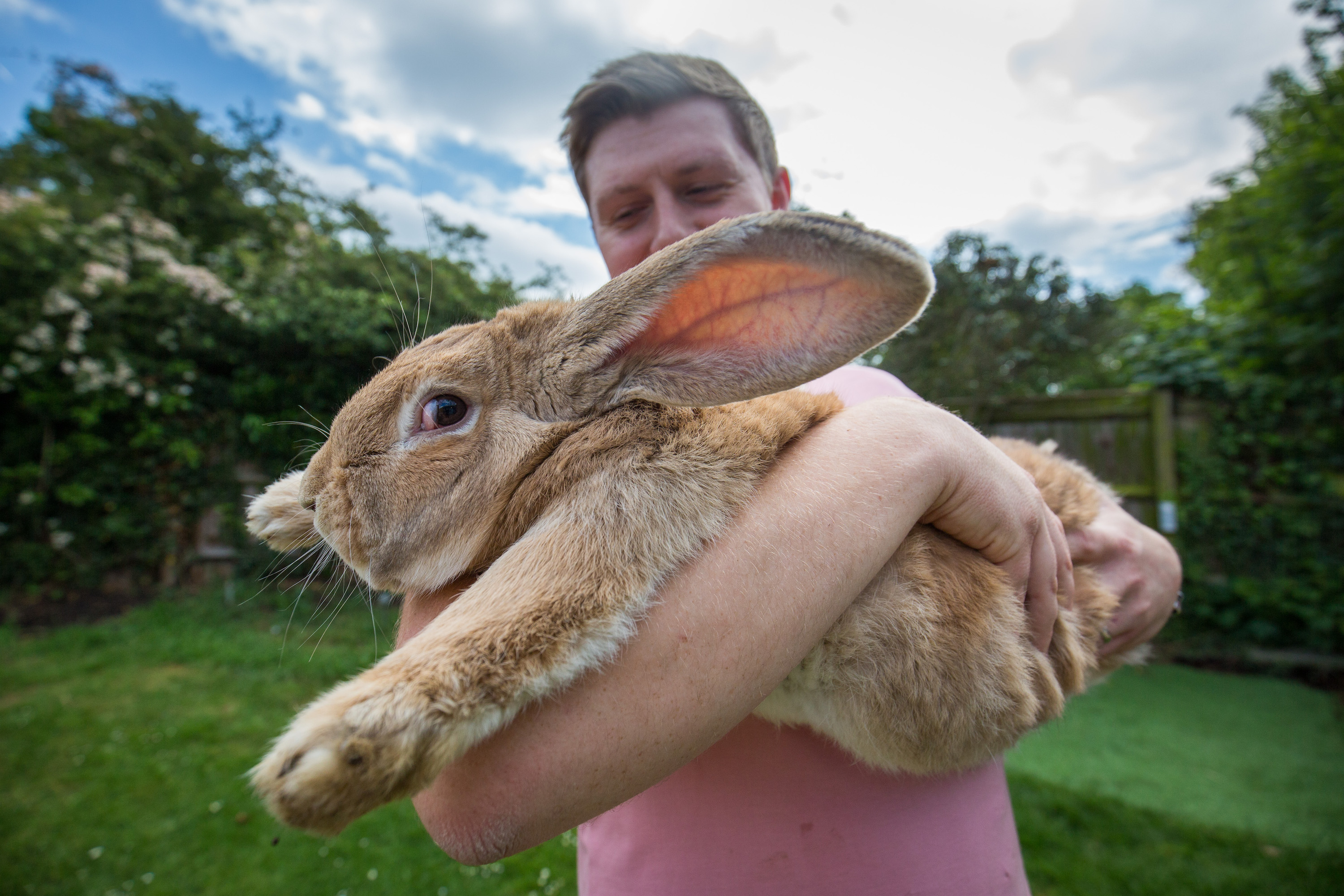Rabbits: Habits, diet & other facts
Rabbits are social animals, with colonies of the fluffy mammal occupying most of the world’s land masses.

Rabbits are small mammals with fluffy, short tails, whiskers and distinctive long ears. There 29 species around the world, according to Nature by PBS and, while they live in many different environments, they have many things in common.
Rabbits and hares are in the same taxonomic family, Leporidae, but they are in different genera. There are 11 genera within the family, but the term “true hares” refers only to species in the genus Lepus; all others are rabbits. Also, the American Rabbit Breeders Association (ARBA) recognizes 49 rabbit breeds.
How big are rabbits?
Some rabbits are about the size of a cat, and some can grow to be as big as a small child. Small rabbits, such as pygmy rabbits, can be as little as 9.3 inches (24 centimeters) in length and weigh less than a pound, according to the U.S. Fish and Wildlife Service. Larger species grow to 20 inches (50 cm) and more than 10 lbs. (4.5 kilograms).
According to the Journal of Applied Animal Research, the Flemish Giant is the largest rabbit breed in the world. The average weight of the Flemish Giant is 25 lbs (11 kg), according to World Atlas. Other large rabbit species include the Continental Giant at 16 lbs (7 kg) and the Blanc De Bouscat at 15 lbs (6 kg). . The world's longest individual rabbit, according to Guinness World Records, is a Flemish giant that clocked in at 4 feet 3 inches (129 cm) and 49 pounds (22 kg).
Small rabbit breeds include the Britannia Petite, under 2.5 lbs. (1.1 kg); Netherland dwarf, under 2.5 lbs.; dwarf hotot, under 3 lbs. (1.3 kg); and Himalayan, 2.5 to 4.5 lbs. (1.1 to 2 kg).
Rabbit reproduction
Rabbits are known for their insatiable reproductive habits for good reason. They breed three to four times each year. This is because only 15 percent of baby rabbits make it to their first birthday, according to the Animal Diversity Web (ADW). So, to ensure that the population grows, rabbits have more babies.
According to the Wildlife Center of Virginia, in each pregnancy a female rabbit produces between one and twelve babies, called kittens or kits. However, the average number is five.
Get the world’s most fascinating discoveries delivered straight to your inbox.
After around three weeks, a kit can care for itself, according to the Wildlife Center of Virginia. In two or three months it is ready to start a family of its own. If there is a lack of natural predators, an area can quickly become overrun with rabbits.
What do rabbits eat?
Rabbits are herbivores, according to the Journal of Mammalogy. This means that they have a plant-based diet and do not eat meat. Their diets include grasses, clover and some cruciferous plants, such as broccoli and Brussels sprouts. They are opportunistic feeders, according to the University of Missouri, and so also eat fruits, seeds, roots, buds, and tree bark.
Where do they live?
While originally from Europe and Africa, rabbits are now found all over the world. Wild rabbits occupy most of the world’s continents, except for Asia and Antarctica, according to ADW. Although originally absent from many countries, such as Australia and New Zealand, rabbits have been introduced to these locations during the last few centuries, according to the journal Mammal Review.

Domestic rabbits need a regulated environment to protect against heat exhaustion or hypothermia. Wild rabbits don't have this problem and make their homes in various temperature extremes. Wild rabbits can be found in woods, forests, meadows, grasslands, deserts, tundra and wetlands.
Wild rabbits create their own homes by tunneling into the ground. These tunnel systems are called warrens and include rooms for nesting and sleeping. They also have multiple entrances for quick escape. Warrens can be as deep as 9.84 feet (3 meters) underground, according to the Textbook of Rabbit Medicine.
Rabbits’ habits
Rabbits are very social creatures and live in large groups called colonies. The busiest time of day for rabbits is at dusk and dawn, according to the Proceedings of the 8th World Rabbit Congress. This is when they venture out to find food. The low light allows them to hide from predators.
Predators — which include owls, hawks, eagles, falcons, wild dogs, feral cats and ground squirrels — are a constant threat. The rabbit’s long legs and ability to run for long periods at high speeds are likely evolutionary adaptations to help them elude things that want to eat them.
Classification/ taxonomy
This is the taxonomy of rabbits, according to ADW, the International Union for Conservation of Nature (IUCN) and the Integrated Taxonomic Information System (ITIS):
Kingdom: Animalia
Phylum: Chordata
Subphylum: Vertebrata
Class: Mammalia
Order: Lagomorpha
Family: Leporidae
Genera:
- Brachylagus (pygmy rabbits)
- Bunolagus (riverine rabbits)
- Nesolagus (Sumatran rabbits, Annamite striped rabbits)
- Oryctolagus (Old World rabbits, European rabbits, domestic rabbits)
- Pentalagus (Amami rabbits)
- Poelagus (Bunyoro rabbits)
- Romerolagus (volcano rabbits)
- Sylvilagus (cottontail rabbits)
Species: There are more than 50 species of rabbits. The domestic rabbit is Oryctolagus cuniculus.
Conservation status

The domestic or European rabbit is considered within near threatened range by the IUCN. Found all over the world, scientists think most populations are descendants of domestic rabbits that were released in the wild. According to the Encyclopedia of Immunobiology, it is native to the Iberian Peninsula, and in that area, populations have declined as much as 95 percent from its 1950 numbers, and about 80 percent of its 1975 numbers. The decline is attributed to habitat loss, disease and hunting. Rabbits are considered pests by many gardeners.
Bunolagus monticularis, the riverine rabbit of South Africa, is critically endangered, according to the IUCN. Of 10 subpopulations, none is estimated to have more than 50 individuals, according to the IUCN’s Red List of Threatened Species. Loss of habitat is the main threat.
Nesolagus netscheri, the Sumatran striped rabbit, is listed by the IUCN as vulnerable. It is a rare species, according to IUCN, and not well known locally. The species lives only on the island of Sumatra, Indonesia, at altitudes between 600 and 1,600 m (1,969 and 5,249 feet).
Pentalagus furnessi (Amami rabbit), which is found only on two Japanese islands, is endangered, according to the IUCN. Populations are declining because of invasive predators and habitat loss caused by forest clearing and resort construction. There are only about 5,000 individuals alive on Amami Island and 400 on Tokuno Island.
Romerolagus diazi (Volcano rabbit) is listed as endangered. It is found only in Mexico near the volcanoes Popocatepetl, Iztaccihuatl, El Pelado and Tlaloc. A 1994 study in the Journal of Mammalogy found between 2,478 and 12,120 individuals, but the population trend is increasing.
Several species of cottontail rabbits (genus Silvilagus) are listed as near threatened, threatened, vulnerable, endangered and critically endangered. The San José brush rabbit (Silvilagus mansuetus) is found only on San José Island in the Gulf of California. The one population occupies an area of about 20 square kilometers (7.7 square miles). Fewer individuals were observed in 2008 compared to studies in 1995 and 1996, although quantities were recorded.
Other facts

Rabbits can be very crafty and quick. To get away from a predator, a cottontail rabbit will run in a zigzag pattern and reach speeds of up to 18 mph (29 km/h), according to Warnell School of Forestry and Natural Resources at the University of Georgia.
Their ears can grow to 4 inches (10 cm), according to PDSA. This stretched-out length allows them to better hear predators that may be approaching. It also allows them to stay cool in hot climates. Extra body heat is released through blood vessels in the ear, according to the Biomimicry Institute.
Their eyes are made for safety, too, since each eye can rotate almost 360 degrees, according to North American Nature. This allows them to look behind them without turning their heads.
Rabbits don't get a lot of nourishment from their diet. They often eat their own excrement to access any remaining nourishment that their digestive system may have missed the first time, according to the book Nutrition of the Rabbit.
Additional resources
To read more about why rabbits were introduced to Australia, go to the National Museum Australia website. You can explore the large variety of rabbit breeds at the American Rabbit Breeders Association website.
Bibliography
"A comparison of selected performance indicators, nutrient digestibility and nitrogen balance parameters in Californian and Flemish Giant rabbits". Journal of Applied Animal Research (2014). https://www.tandfonline.com/doi/full/10.1080/09712119.2013.875905
"Palatability of plants to small mammals in nonnative grasslands of east-central Illinois". Journal of Mammalogy (2013). https://academic.oup.com/jmammal/article/94/2/427/911348?login=true
"Preventing and controlling damage caused by cottontail rabbits." University of Missouri (2014).
https://mospace.umsystem.edu/xmlui/handle/10355/43374?show=full
"A conservation paradox for the 21st century: the European wild rabbit Oryctolagus cuniculus, an invasive alien and an endangered native species". Mammal Review (2008). https://onlinelibrary.wiley.com/doi/abs/10.1111/j.1365-2907.2008.00116.x
"Textbook of Rabbit Medicine". Molly Varga Smith. Elsevier Health Sciences (2013). https://books.google.co.uk/books
"Sociometric Investigations in Groups of Wild and Domestic Rabbits With One Buck and Two or Three Does". Proceedings- 8th World Rabbit Congress (2004). http://world-rabbit-science.com/WRSA-Proceedings/Congress-2004-Puebla/Papers/Welfare%20&%20Ethology/W-Hoy.pdf
"Development and Phylogeny of the Immune System". Encylopedia of Immunology (2016). https://www.sciencedirect.com/topics/neuroscience/myxomatosis
"Distribution and Population Size of Romerolagus diazi on El Pelado Volcano, Mexico". Journal of Mammalogy (1994). https://www.jstor.org/stable/1382525
"Feeding behaviour of rabbits". Nutrition of the Rabbit (2020). https://hal.inrae.fr/hal-02569326

- Ailsa HarveyContributor



